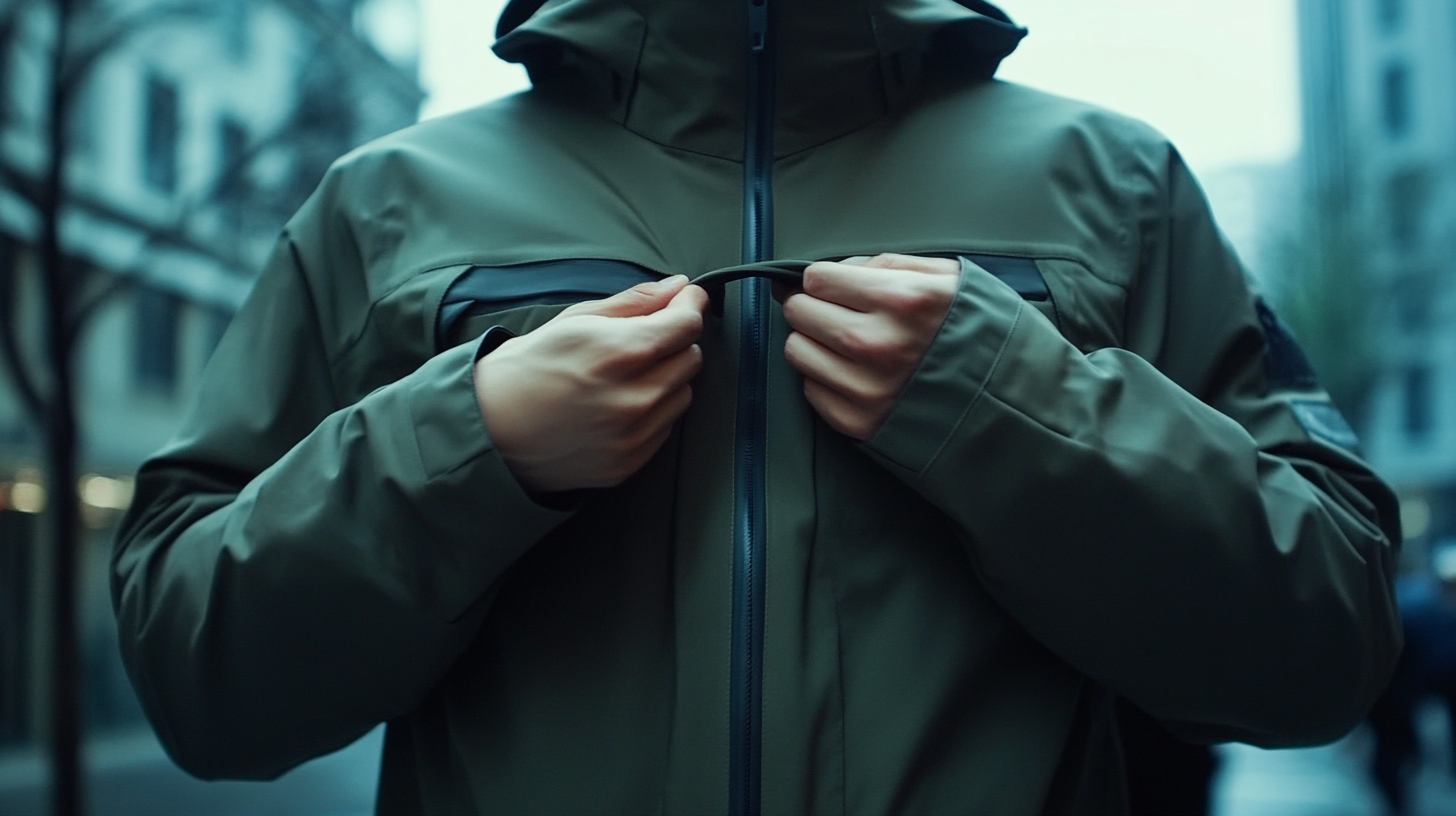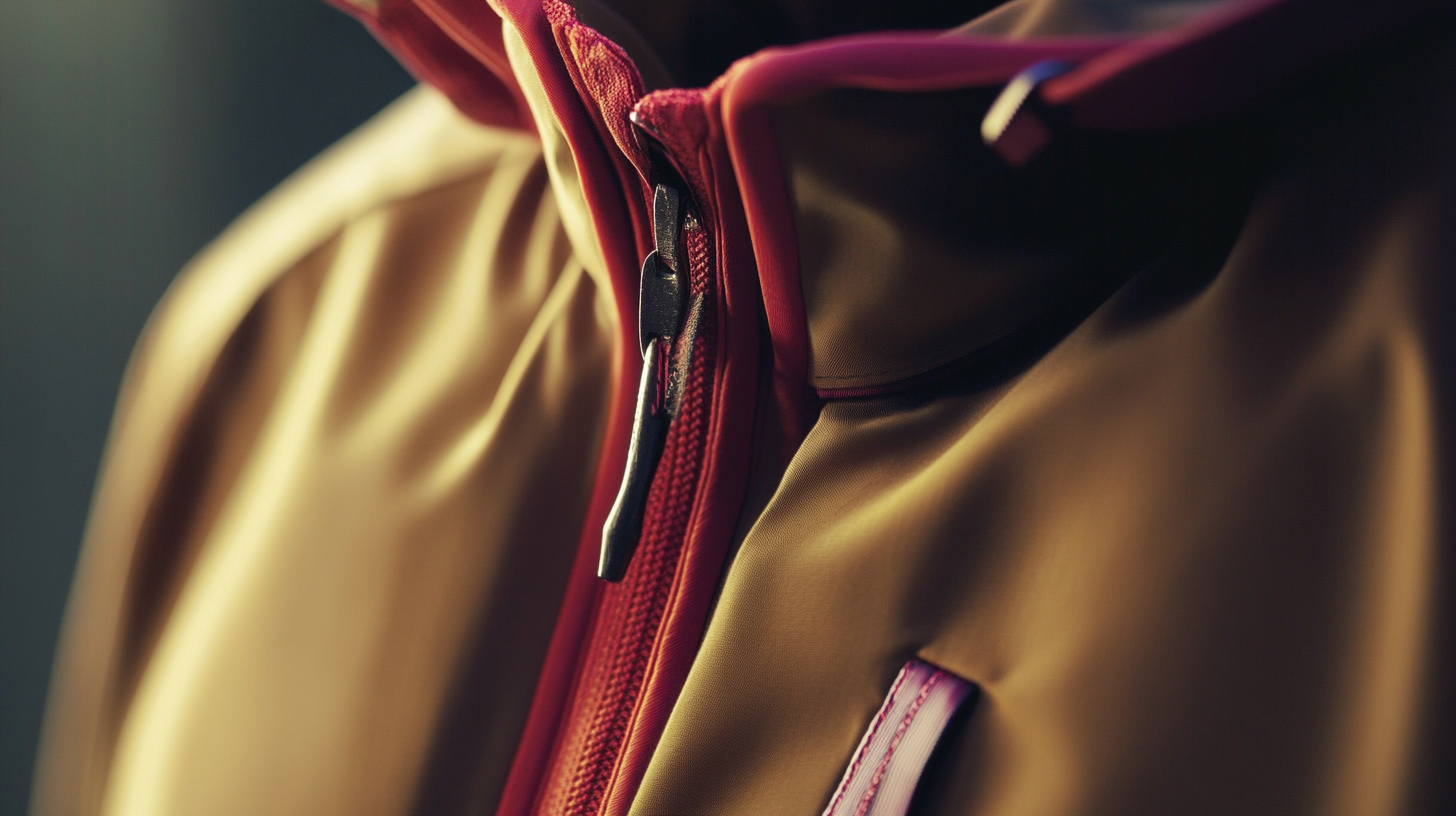
World Class Manufacturing Makes China's Softshell Clothes a Global Pride
In recent years, China's softshell clothes have emerged as a significant player in the global apparel market, showcasing the nation's world-class manufacturing capabilities. According to a report by ResearchAndMarkets, the global softshell clothing market is expected to grow at a CAGR of 4.5% from 2021 to 2026, driven by increasing outdoor activities and a rising demand for multifunctional apparel. China's advanced manufacturing technologies and stringent quality control standards have positioned it as a leading exporter, with softshell clothing accounting for a substantial share of the international sportswear segment. This blog explores the transformative journey of China's softshell clothes, highlighting how innovative production techniques and commitment to quality have made these garments a source of national pride, resonating with consumers around the globe.

Importance of Softshell Materials in Modern Apparel Manufacturing
The significance of softshell materials in modern apparel manufacturing cannot be overstated, particularly as the industry seeks to balance performance and comfort. According to a report by MarketsandMarkets, the global softshell fabric market is projected to reach USD 2.47 billion by 2024, driven by advancements in textile technology and an increasing demand for functional outdoor apparel. This upward trend highlights the essential role that softshell materials play in creating garments that offer excellent weather resistance, breathability, and flexibility.
One of the key attributes of softshell fabrics is their ability to provide a comfortable wearing experience while still offering protection against the elements. For instance, manufacturers are leveraging advanced technologies such as membrane systems—resulting in enhanced water repellency and wind resistance. The American Society for Testing and Materials (ASTM) indicates that high-quality softshell fabrics can achieve up to 20,000 mm of water column resistance, making them not only suitable for casual wear but also for extreme outdoor activities. As global outdoor recreation expands, the demand for such innovative materials continues to grow, solidifying softshells as a staple in both performance and fashion trends within the apparel industry.

Diverse Features of Softshell Clothing: Versatility and Performance
Softshell clothing has carved a niche for itself in the global fashion and outdoor apparel market, particularly due to its unique versatility and performance features. According to a report by Grand View Research, the global softshell jacket market is projected to reach USD 3.57 billion by 2025, expanding at a compound annual growth rate (CAGR) of 6.4%. This growth can be attributed to the increasing demand for multifunctional apparel that seamlessly blends style, comfort, and practicality.
One of the standout characteristics of softshell clothing is its adaptability to varying weather conditions. The hybrid fabric typically consists of a combination of woven and knitted materials that offer both insulation and breathability. This makes softshells ideal for a range of activities—from casual city wear to rigorous outdoor sports. The waterproof and wind-resistant properties of these garments enhance their appeal, with a survey by the Outdoor Industry Association indicating that 66% of outdoor enthusiasts prefer clothing that can transition effortlessly from one environment to another. As manufacturers in China hone their production techniques to meet these diverse consumer demands, softshell clothing is not only gaining popularity domestically but also making waves on the international scene, standing tall as a testament to China's World Class Manufacturing capabilities.
World Class Manufacturing Makes China's Softshell Clothes a Global Pride - Diverse Features of Softshell Clothing: Versatility and Performance
| Feature | Description | Performance Measure |
|---|---|---|
| Water Resistance | Keeps the body dry in wet conditions | Water Column: ≥ 10,000 mm |
| Breathability | Allows moisture vapor to escape | MVTR: ≥ 5000 g/m²/24h |
| Durability | Resistant to wear and tear | Abrasion Resistance: ≥ 30,000 cycles |
| Comfort | Soft to touch and flexible | Stretch Factor: 4-way stretch |
| Lightweight | Easy to pack and carry | Weight: ≤ 300 g/m² |
Comparative Analysis: Softshell vs. Traditional Outerwear Alternatives
Softshell jackets have gained immense popularity, particularly in regions with fluctuating weather conditions, owing to their unique blend of comfort, flexibility, and protection. Unlike traditional outerwear alternatives, such as bulky raincoats or stiff parkas, softshell garments are designed to offer a more streamlined silhouette while still providing a range of functionalities. Their water-resistant yet breathable fabric allows for better moisture management, making them an ideal choice for outdoor enthusiasts who engage in activities like hiking, running, or cycling.
When comparing softshells to their traditional counterparts, it becomes clear that advancements in textile technology have changed the game. Traditional outerwear often relies on heavier materials, which can restrict movement and be less comfortable. In contrast, softshell jackets incorporate stretchy materials and ergonomic designs, allowing for a full range of motion without sacrificing warmth. Additionally, the lightweight nature of softshells makes them easier to pack and carry, which is an attractive feature for travelers and outdoor adventurers. As global manufacturing standards elevate, China's production of softshell garments exemplifies how innovation can foster quality and style, positioning these jackets as a leading choice on the world stage.
Comparative Analysis: Softshell vs. Traditional Outerwear Alternatives
Market Trends: The Growing Demand for High-Quality Softshell Products
As global outdoor activities continue to gain popularity, the demand for high-quality softshell products is on the rise. Consumers are seeking durable, versatile, and stylish clothing that can withstand varying weather conditions while providing comfort. This shift in market trends showcases a growing appreciation for the craftsmanship and technology incorporated into softshell apparel, particularly from China, known for its world-class manufacturing standards.

To stand out in this competitive market, brands must prioritize quality and innovation. One key tip is to focus on selecting superior materials that enhance breathability and flexibility, ensuring that the garments not only look good but also perform well under diverse circumstances. Additionally, companies should invest in sustainable production practices to attract eco-conscious consumers, thus building a more responsible brand image.
Another essential consideration is the importance of design and functionality. Brands can leverage consumer feedback to create products tailored to specific outdoor activities, whether it be hiking, skiing, or everyday wear. Collaborating with influencers in the outdoor space can also elevate brand visibility and reach, further capitalizing on the growing interest in softshell products. By adopting these strategies, companies can thrive in the expanding global market for high-quality softshell apparel.
Sustainable Practices in the Production of Softshell Clothing
In recent years, the softshell clothing industry in China has gained international acclaim not just for its quality but also for its commitment to sustainable practices. Manufacturers are increasingly adopting eco-friendly materials and processes, which have significantly reduced their carbon footprint. Brands are investing in recycled fabrics and organic cotton, ensuring that their products are not only stylish but also conscious of the environment.
**Tip:** When shopping for softshell clothing, look for certifications such as GOTS (Global Organic Textile Standard) or OEKO-TEX, which indicate that the materials used are sustainable and safe for both consumers and the planet.
Moreover, Chinese manufacturers are implementing innovative waste management systems, repurposing scraps and minimizing excess production. This approach not only conserves resources but also promotes a circular economy within the fashion industry. By focusing on sustainable production, they are setting a trend that others around the globe are sure to follow.
**Tip:** Support brands that prioritize sustainability; even small purchases can make a significant difference. Every choice counts in fostering a greener future for the textile industry.
